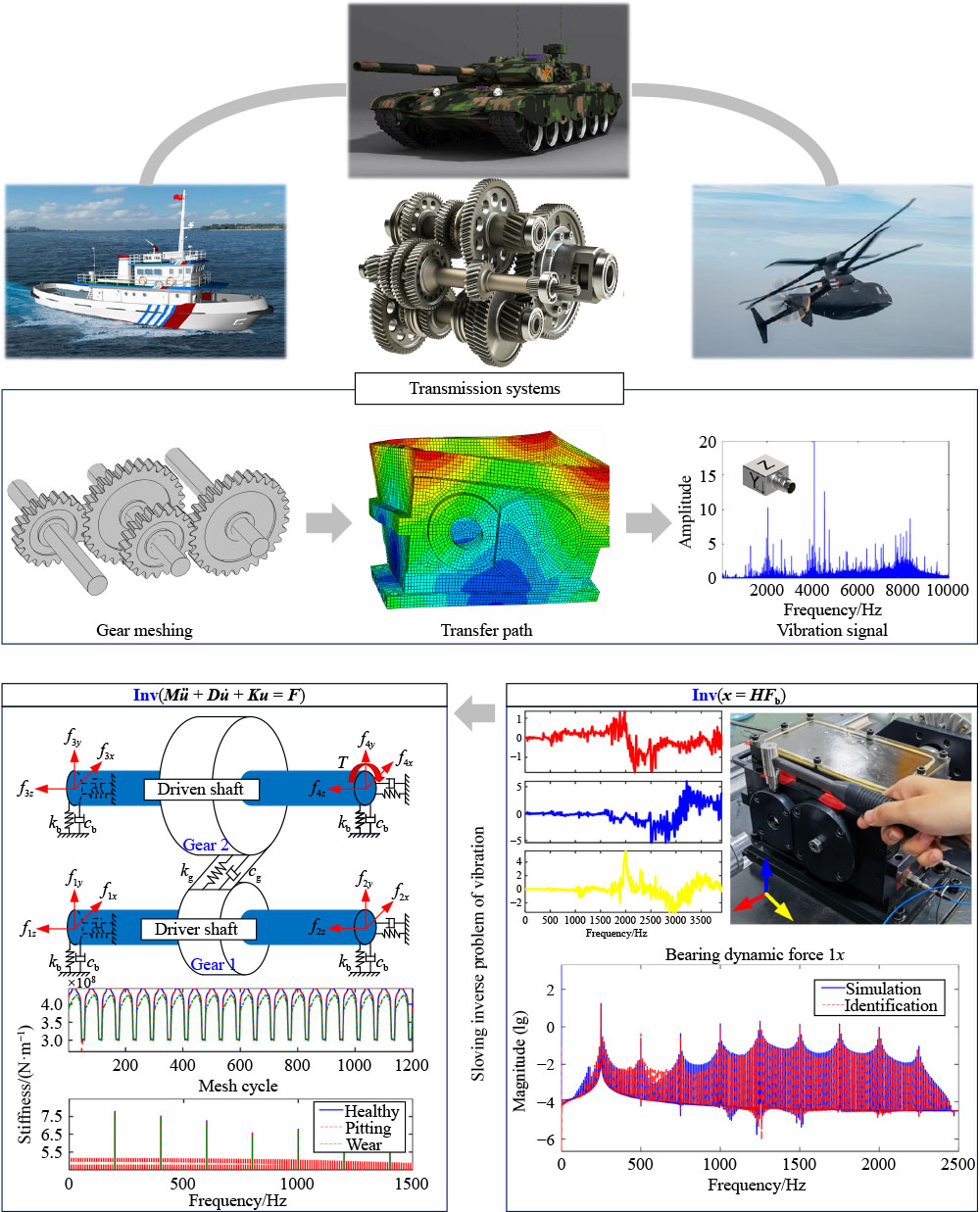| Abbreviations |
| DOF | Degree of freedom |
| FEM | Finite element method |
| FT | Fourier Transform |
| FRF | Frequency response function |
| GMS | Gear meshing stiffness |
| GMSI | Gear meshing stiffness identification |
| IMF | Intrinsic mode function |
| IFT | Inverse Fourier Transform |
| Variables |
| System damping matrix |
| , | Real and imaginary parts of the x component of bearing dynamic force at bearing i, respectively |
| Meshing frequency |
| Intermediate variable of the decoupled bearing dynamic force excitation spectra vector |
| External excitation |
| External load |
| Bearing dynamic force excitation spectra vector |
| Bearing force |
| Decoupled bearing dynamic force excitation spectra vector |
| Load caused by no-load transfer error of the gear pair |
| Frequency response functions |
| Transfer function matrix |
| Decoupled transfer function matrix |
| Transition matrix |
| I1, I2 | Transverse moments of inertia of gears 1 and 2, respectively |
| J1, J2 | Polar moments of inertia of gears 1 and 2, respectively |
| Meshing stiffness of the gear pair |
| Meshing stiffness of gear pair i |
| , , | Bearing stiffnesses of translational DOF in x-, y-, and z-direction, respectively |
| , | Bearing stiffnesses of rotational DOF in x and y directions, respectively |
| Bearing flexibility vector |
| Bearing stiffness vector |
| Temporary variable containing meshing stiffness of all gear pairs |
| System stiffness matrix |
| Meshing stiffness matrix of the gear pair |
| Unit stiffness matrix of the system |
| Estimated whole meshing stiffness matrix |
| Meshing stiffness matrix of gear pair i |
| Number of bearing dynamic force excitation channels |
| Mass of gear |
| | Masses of gears 1 and 2, respectively |
| System mass matrix |
| Mg | Mass matrix of a lumped mass model |
| Mass matrix of the gear pair |
| Number of response channels |
| Node number |
| Radii of base circle |
| S2 | 2-norm similarity index |
| Se | Energy ratio similarity index |
| T1, T2 | Torques applied on the input shaft and output shaft, respectively |
| Nodes displacement vector |
| DOF of the beam model |
| Vibration response of all nodes in the frequency domain |
| Element of the weighted matrix |
| W | Weighted matrix |
| Translational DOF of beam in x direction |
| Translational DOFs of gears 1 and 2 in x direction, respectively |
| Translational DOF of bearing in x direction |
| Real and imaginary parts of the x component of housing vibration response at location j, respectively |
| Response channel spectra vector |
| Vibration response of all bearing nodes |
| Displacement vector of bearing |
| Decoupled response channel spectra vector |
| Generalized coordinate of the gear pair |
| Translational DOF of beam in y direction |
| | Translational DOFs of gears 1 and 2 in y direction, respectively |
| Translational DOF of bearing in y direction |
| Translational DOF of beam in z direction |
| | Translational DOFs of gears 1 and 2 in z direction, respectively |
| Translational DOF of bearing in z direction |
| Weighted factor |
| Projection vector of the gear pair |
| Angle between the positive y axis and the meshing surface |
| Ψ | Projection matrix of all gear nodes |
| Numerical error |
| Angular frequency |
| , , | Rotational DOFs of beam in x, y, and z directions, respectively |
| | Rotational DOFs of gears 1 and 2 in x direction, respectively |
| | Rotational DOFs of gears 1 and 2 in y direction, respectively |
| | Rotational DOFs of gears 1 and 2 in z direction |
| , , | Rotational DOFs of bearing in x, y, and z directions, respectively |
| Projection matrix |





















